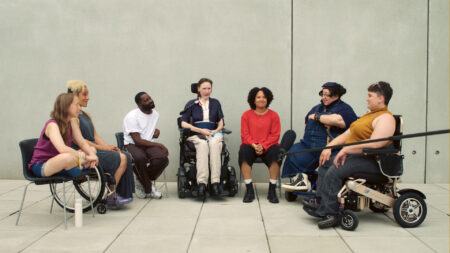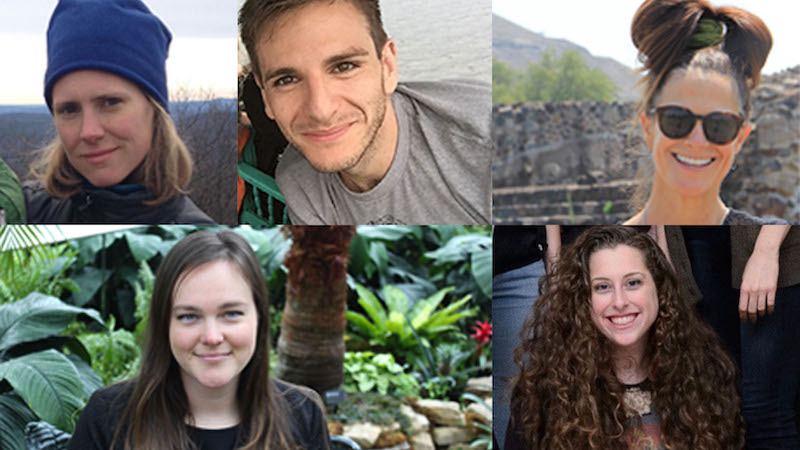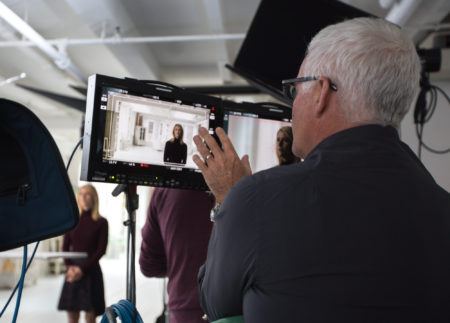Meet the second half of the new cohort of Art21 Educators, all of whom are actively integrating contemporary art into their teaching practices.
 Tracie Dunn teaches art education at Concord Carlisle High School in Concord, Massachusetts. She helped start a school-within-a-school program there called “Rivers and Revolutions” in which five teachers from the academic disciplines of art, English, math, science and social studies, work as a team to develop integrated curriculum in collaboration with participating students. For one semester, a cohort of 50 juniors and seniors joins the faculty to cultivate a “growth mindset,” both for each individual and for the whole group as a learning community.
Tracie Dunn teaches art education at Concord Carlisle High School in Concord, Massachusetts. She helped start a school-within-a-school program there called “Rivers and Revolutions” in which five teachers from the academic disciplines of art, English, math, science and social studies, work as a team to develop integrated curriculum in collaboration with participating students. For one semester, a cohort of 50 juniors and seniors joins the faculty to cultivate a “growth mindset,” both for each individual and for the whole group as a learning community.
“I see art and artists as part of one huge family. So contemporary art is part of who I am, and is an expression of who we are as people, living today,” she said. “With each thematic unit I teach, for example ‘revolutions,’ I try to offer historic examples of revolutions in art (or revolutionaries), contemporary examples, local examples, and hands-on experiences. Contemporary art often provokes the deepest conversations, and inspires the experience of making art.”
 Cory Schneider is a fiction writer and an English teacher for middle schoolers at Rodeph Sholom School on the Upper West Side of Manhattan. He previously participated in the Whitney Museum’s Teaching Fellows program, and is constantly looking for ways to integrate discussion and consideration of contemporary art into his English curriculum. Contemporary art fits especially well in his poetry units, as he asks students to learn from New York Close Up artists, who use the city to inform their creative processes.
Cory Schneider is a fiction writer and an English teacher for middle schoolers at Rodeph Sholom School on the Upper West Side of Manhattan. He previously participated in the Whitney Museum’s Teaching Fellows program, and is constantly looking for ways to integrate discussion and consideration of contemporary art into his English curriculum. Contemporary art fits especially well in his poetry units, as he asks students to learn from New York Close Up artists, who use the city to inform their creative processes.
“Contemporary art challenges our conventional notions of what art is or can be. It asks us to suspend our disbeliefs and embrace ways of seeing and feeling, of understanding our world,” he said. “Contemporary art asks us to engage with our humanity in ways that might seem off-putting or downright impossible, but no less so than the process of finding oneself in the seated portrait of a Renaissance era noblewoman or still life set in a stifling Victorian parlor.”
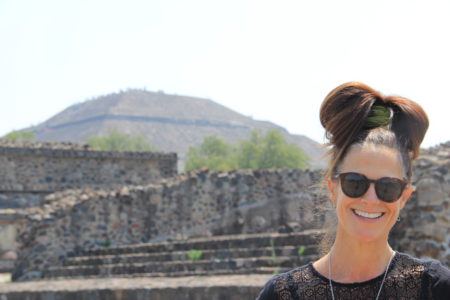 Molly Cornwell teaches second grade at Sylvan Park School in Los Angeles. Molly has brought art into the classroom since beginning her teaching career nearly a two decades ago, and uses her location in Los Angeles to take students to nearby museums like LACMA, the Los Angeles County Museum of Art. Currently working towards a supplemental credential in Visual Art, Molly is hoping to teach art full-time by the 2018-2019 school year.
Molly Cornwell teaches second grade at Sylvan Park School in Los Angeles. Molly has brought art into the classroom since beginning her teaching career nearly a two decades ago, and uses her location in Los Angeles to take students to nearby museums like LACMA, the Los Angeles County Museum of Art. Currently working towards a supplemental credential in Visual Art, Molly is hoping to teach art full-time by the 2018-2019 school year.
“I see contemporary art as being art that expresses the artist’s’ sociological, philosophical and political views of his or her time in the twenty-first century,” she said. “We were lucky enough to get a free trip to LACMA in early March, and Chris Burden’s Metropolis was the biggest hit of the day!”
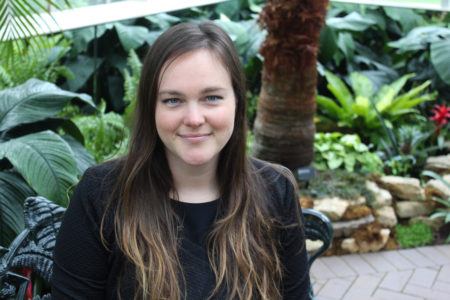 Anna Wolff is an educator at Frederik Meijer Gardens and Sculpture Park in Grand Rapids, Michigan, which has a collection of primarily contemporary artworks. She teaches roughly 50,000 students each year from public, private, and home schools who come to the Sculpture Park for field trips. Using Art21 films to train docents and volunteers, Anna says she loves using Art21 in her classroom because it “humanizes contemporary art,” sharing the story behind the minimalism that often excludes uninformed audiences.
Anna Wolff is an educator at Frederik Meijer Gardens and Sculpture Park in Grand Rapids, Michigan, which has a collection of primarily contemporary artworks. She teaches roughly 50,000 students each year from public, private, and home schools who come to the Sculpture Park for field trips. Using Art21 films to train docents and volunteers, Anna says she loves using Art21 in her classroom because it “humanizes contemporary art,” sharing the story behind the minimalism that often excludes uninformed audiences.
“Contemporary art is a mirror of life now, and what life could be,” she said. “It touches all people, in all walks of life, and offers an opportunity to reflect, think critically, and become a more creative and open-minded individual. The best art is often specific to one identity or view, yet it has universal truths that touch lives beyond the artist’s own community.”
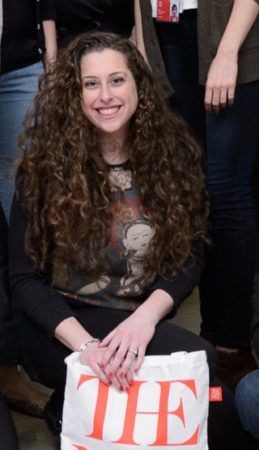 Ashley Cantor teaches a variety of subjects and topics to students with disabilities at P.S. K721 in Brooklyn. She describes contemporary art as a necessary component of her teaching practice, as incorporating visual content often takes the pressure off of those students who have difficulty reading. These students often embed contemporary art in their daily lives, as a “bridge” through which they can access more difficult subjects. For instance, although some of Ashley’s students are unable to read written text, they can navigate the MTA subway system by recognizing the art installations at specific stops.
Ashley Cantor teaches a variety of subjects and topics to students with disabilities at P.S. K721 in Brooklyn. She describes contemporary art as a necessary component of her teaching practice, as incorporating visual content often takes the pressure off of those students who have difficulty reading. These students often embed contemporary art in their daily lives, as a “bridge” through which they can access more difficult subjects. For instance, although some of Ashley’s students are unable to read written text, they can navigate the MTA subway system by recognizing the art installations at specific stops.
“Contemporary art has always played a role in my educational practices because I feel that the option to share your story with others in a creative manner is a key component of growing and learning,” she said. “For students that do not have prior knowledge, contemporary art gives them a platform to gain new information, and a leveled starting point with their peers. Contemporary art is beneficial during group discussions because all students are starting from the same place: what they see.”
